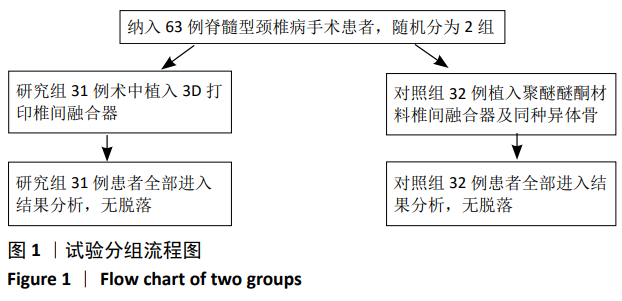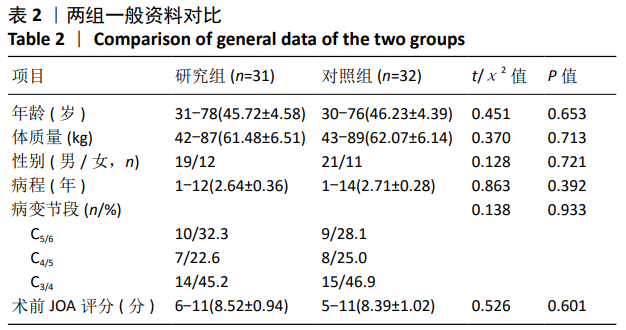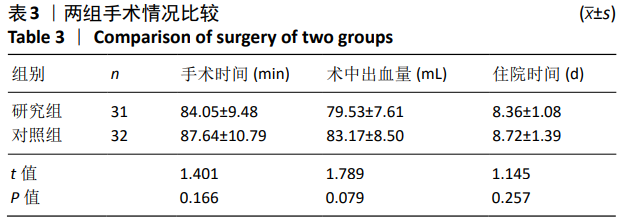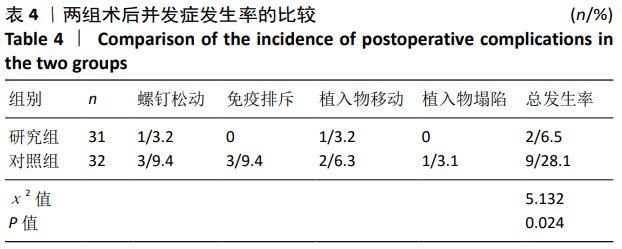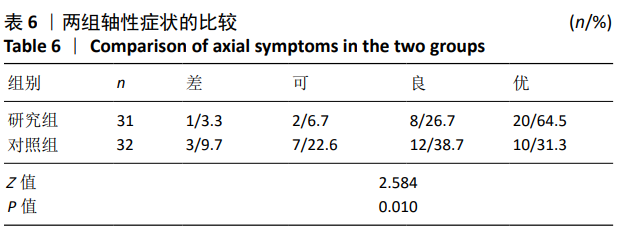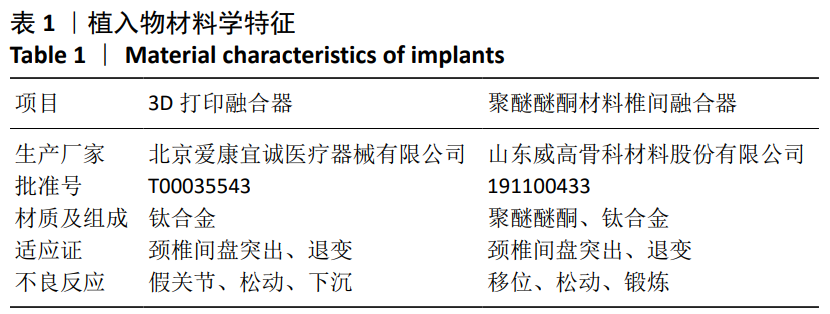中国组织工程研究 ›› 2021, Vol. 25 ›› Issue (6): 849-853.doi: 10.3969/j.issn.2095-4344.2386
• 数字化骨科Digital orthopedics • 上一篇 下一篇
3D打印椎间融合器置入治疗脊髓型颈椎病:颈椎曲度及椎间高度恢复的半年随访
刘正蓬,王雅辉,张义龙,明 颖,孙志杰,孙 贺
- 承德医学院附属医院,河北省承德市 067000
Application of 3D printed interbody fusion cage for cervical spondylosis of spinal cord type: half-year follow-up of recovery of cervical curvature and intervertebral height
Liu Zhengpeng, Wang Yahui, Zhang Yilong, Ming Ying, Sun Zhijie, Sun He
- Affiliated Hospital of Chengde Medical University, Chengde 067000, Hebei Province, China
摘要:
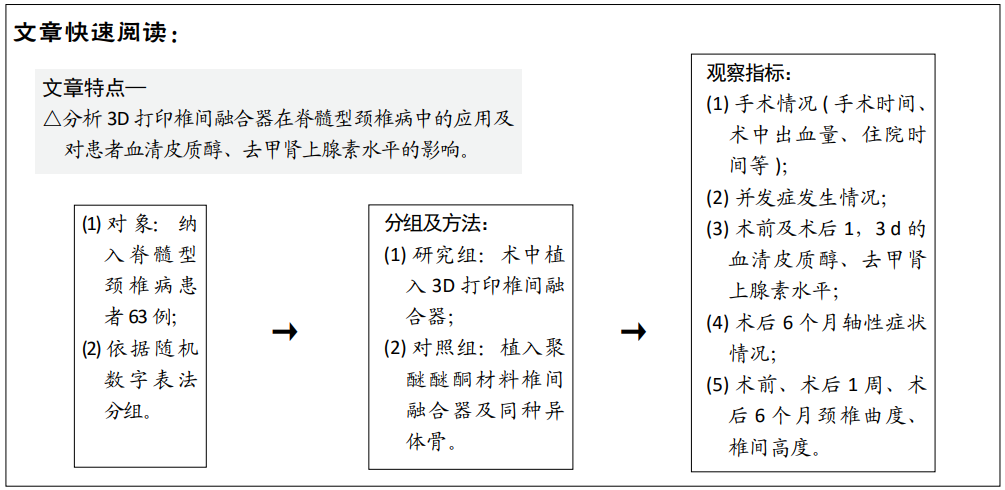
文题释义:
3D打印椎间融合器:是利用3D打印技术制作而成,为椎间融合器设计创新带来了新机遇,与传统设计比较,3D打印椎间融合器集成了利于骨融合的多孔结构,且植入模型与患者解剖及功能匹配度高,生物相容性好。
应激反应:为个体非特异性反应,在生理上可表现为皮质醇、去甲肾上腺素等分泌量增多;由于生物材料植入过程中机体内环境会产生一定改变,出现不同程度免疫、应激反应,因此测定围术期皮质醇、去甲肾上腺素表达可反映机体应激情况。
背景:近期临床研究发现,生物材料植入过程中机体内环境会产生一定改变,出现不同程度的免疫、应激反应,且不同生物材料机体免疫、应激反应亦有明显差异。
目的:探讨3D打印椎间融合器在脊髓型颈椎病中的应用效果及对患者血清皮质醇、去甲肾上腺素水平的影响。
方法:选择2015年7月至2018年7月承德医学院附属医院收治的脊髓型颈椎病患者63例,其中男40例,女23例,年龄30-78岁,按照随机数字表分为研究组(n=31)、对照组(n=32),均接受颈椎前路减压植骨融合内固定治疗,研究组术中植入3D打印椎间融合器,对照组植入聚醚醚酮材料椎间融合器及同种异体骨。对比两组手术情况、并发症发生情况,术前及术后1,3 d检测血清皮质醇、去甲肾上腺素水平,术前及术后1周、6个月检测颈椎曲度、椎间高度,术后6个月统计轴性症状。试验获得承德医学院附属医院伦理委员会批准。
结果与结论:①两组手术时间、术中出血量、住院时间比较差异无显著性意义(P > 0.05);②研究组31例发生螺钉松动1例、植入物移动1例,对照组32例中发生螺钉松动3例、免疫排斥3例、植入物移动2例、植入物塌陷1例,研究组并发症发生率低于对照组(P < 0.05);③两组术后1,3 d的皮质醇、去甲肾上腺素水平均高于术前(P < 0.05),但研究组低于对照组(P < 0.001);④两组术后1周、6个月的颈椎曲度、椎间高度均高于术前(P < 0.05),且研究组高于对照组(P < 0.05);⑤研究组术后6个月轴性症状轻于对照组(P < 0.05);⑥结果表明,3D打印椎间融合器应用于脊髓型颈椎病可减少并发症,促进颈椎曲度、椎间高度恢复,提高颈椎稳定性,且机体应激反应、轴性症状轻。
中图分类号:
